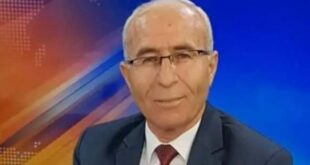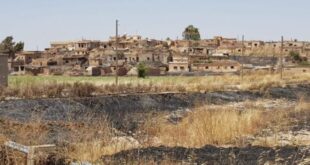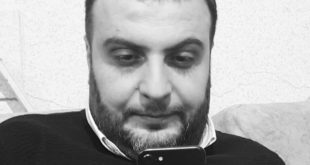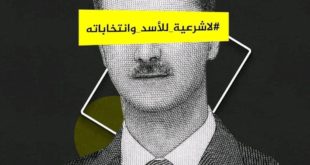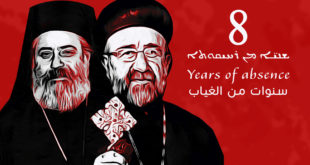ADO-World.org
19 Aug 2011
The United Nations chief human rights officer has recommended Syria be considered for investigation at the International Criminal Court, following a month-long investigation into allegations of government-sponsored killings, torture and abuse.
Navi Pillay, the UN high commissioner on human rights, made the statement on Thursday to coincide with the release of a 22-page reporton the use of force by the security apparatus of Bashar al-Assad, the Syrian president in response to nationwide protests that began in March.
Although investigators were not allowed inside Syria and had to rely on witness accounts, their detailed report corroborates most of the claims that activists have been making for months. Among the findings was the use of armoured vehicles and heavy weapons to kill protesters.
The Syrian government claims it has halted its campaign to put down the protest movement by force. The UN report, however, will likely spur further international action against Syria.
By Friday, at least five European countries – Britain, Germany, France, Portugal and Spain – had called for the UN Security Council to make new sanctions against Syria.
Protesters ‘targeted by live fire’
The fact-finding mission estimated that more than 1,900 civilians were killed in Syria from mid-March to mid-July, when the investigation ended.
The mission received the names and details of those victims from the Local Co-ordination Committees – an informal network of activists spread across the country that organizes protests and relays information to the media.
In response to inquiries from the mission, the Syrian government claimed that 260 members of the military and security forces were killed and 8,000 injured between mid-March and late June.
But UN investigators wrote that many of those casualties were soldiers who were killed or mistreated by fellow troops for defecting or being suspected of disloyalty.
The majority of the civilians who died during demonstrations were shot in the chest or head by live ammunition often fired at close range by internal security forces, military troops and semi-official state militia called shabiha, the report said.
Investigators described the shabiha as a civilian militia composed of Alawis, the minority Shia Muslim denomination to which Assad and his family belong.
Many members of the shabiha formerly belonged to the Defence Brigades, security forces that committed "gross violations of human rights" in the 1980s, investigators said.
Soldiers who deserted the army told investigators they had clear orders to use live ammunition against protesters and would be shot from behind by internal security forces or shabiha if they refused.
‘Executions in a stadium’
In cities such as Deraa, Jisr al-Shughur and Maarat an-Numan, the regime employed tanks, helicopters and vehicle-mounted heavy machine guns against civilians, while in al-Rastan, Talbiseh and Bab Amr, security forces used rocket-propelled grenades and grenade launchers mounted on AK-47 assault rifles, witnesses told the investigators.
Witnesses provided investigators with the names of 353 people killed during summary executions. In one incident on May 1, they said, 26 men in Deraa were blindfolded and shot dead in a football stadium. Security forces also conducted executions during house-to-house searches in Deraa, Jisr al-Shughur, Baniyas, Douma and Latakia.
Investigators said they could not verify repeated allegations that security forces searched for and killed demonstrators in hospitals.
Some witness testimony described the overwhelming scope of the death in gruesome detail. Garbage trucks were seen collecting dead bodies in Latakia on April 8, and the government has used multiple mass graves to bury its victims, the report said.
Residents of cities under siege, such as Deraa, were forced to put dead bodies into refrigerated containers to preserve them, and witnesses said security forces killed injured protesters by putting them into morgue refrigerators.
Cities such as Deraa, Baniyas and Madaya were "blockaded" with the use of heavy artillery and military vehicles, including tanks and mortars, the report said, and those who left their homes to find food were often killed or injured by sniper gunfire. Water tanks were also targeted.
Torture and persecution
"A clear widespread or systematic policy appears to have been in place whereby security forces targeted people suspected of having taken part in demonstrations, with a view to intimidating and terrorising them as a way of quelling protests," the report states.
The report found acts of torture, including beatings, electrocution, stress positions and psychological abuse, such as forcing prisoners to stand naked for hours and threatening them with rape. Children were among those tortured, according to the report.
A forensic physician working with the investigation team examined and photographed witnesses who still displayed injuries or were hospitalised after escaping the country.
Those taken into custody were prevented from contacting their families, not told why they were arrested and denied fair trials or legal representation.
Many detainees were forced to sign confessions while blindfolded, and relatives of those who died were often pressured to sign declarations saying the deceased had had been killed by armed gangs before their bodies were released.
It its most recent English-language response to the UN investigators, on June 27, the Syrian government emphasised its efforts to make political and economic reforms and respond to protesters’ "legitimate" demands. The government said it would investigate the violence that occurred early in the uprising.
It continued to blame the unrest on "foreign regional and international forces, acting to destabilise security and stability".
– Thirteen investigators comprised the fact-finding mission, which was led by Deputy High Commissioner Kyung-wha Kang.
– The mission was created on April 29, began its work on May 23 and had stopped gather information by July 15.
– Staffers conducted three "field investigations" outside Syria in June, interviewing 180 people in four countries. Some of those interviewed were in Syria at the time.
– The team viewed more than 50 videos and photographs documenting the incidents described within the report.
– Investigators spoke with both civilians and military personnel, including those who had defected, and a forensic physician on the team examined wounded people and victims of alleged torture who had arrived at hospitals and refugee camps outside Syria.
 Assyrian Democratic Organization ADO
Assyrian Democratic Organization ADO

